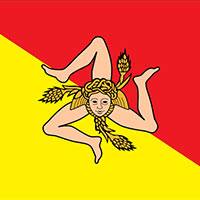Agrigento - the Valley of the Temples
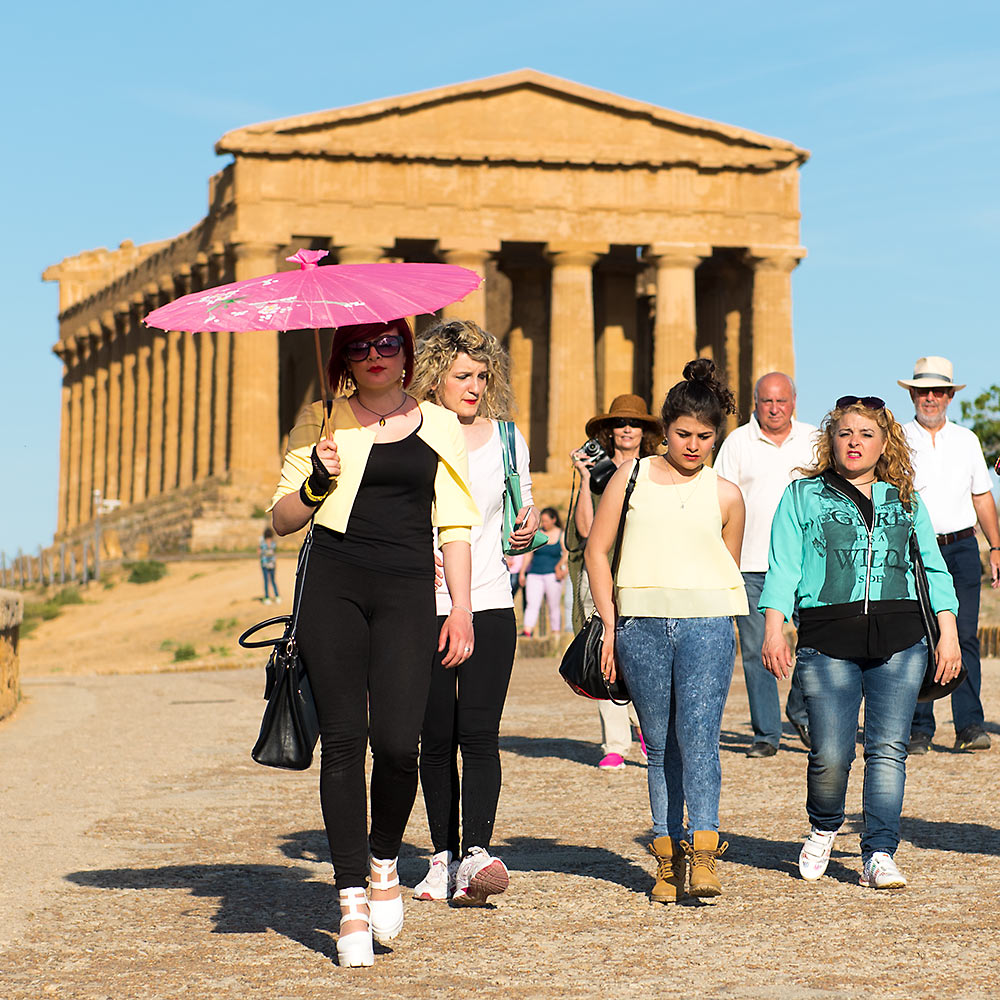
The Valley of the Temples, Agrigento. In the background: The Temple of Concord.
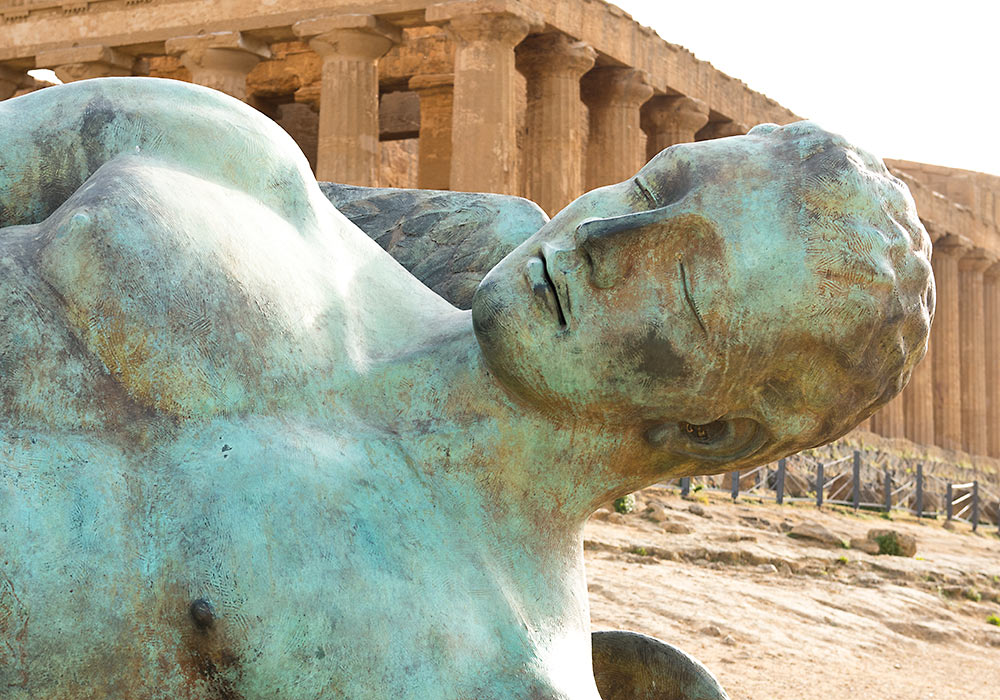
The beautiful bronze statue depicting the fallen Icarus, who flew too close to the sun.
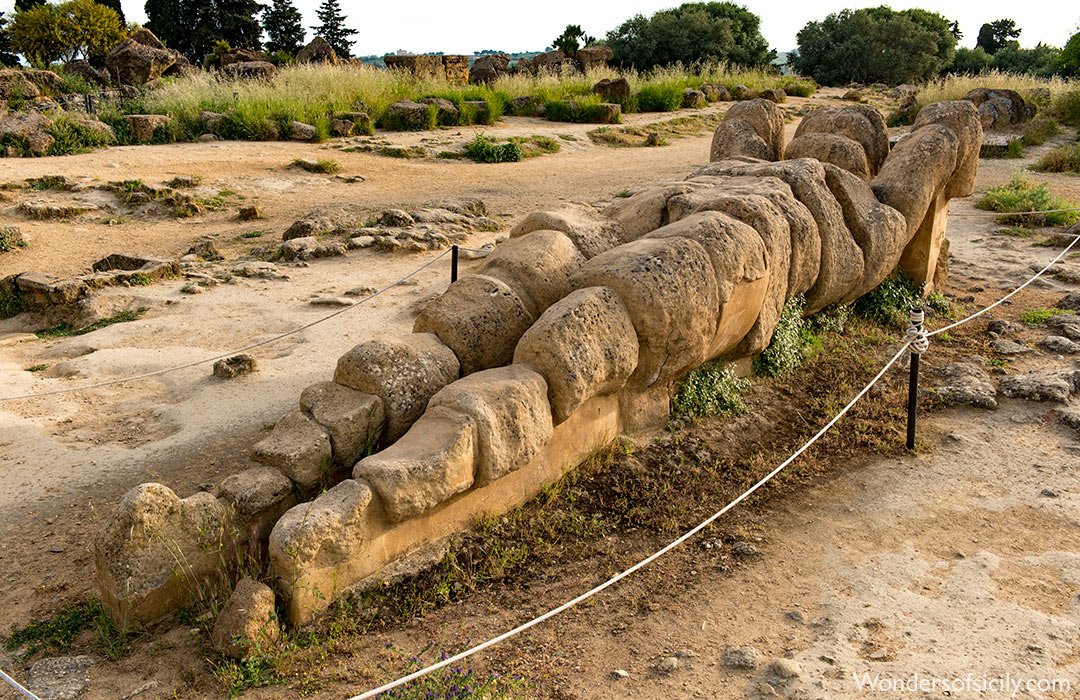
In between the columns of the Temple of Olympian Zeus (Tempio di Giove Olimpico, the largest Doric temple ever constructed, but never completed), were colossal atlases (aka telamons), stone figures standing some 7.5 m high. The nude figures were standing with their backs to the wall and hands stretched above their heads.
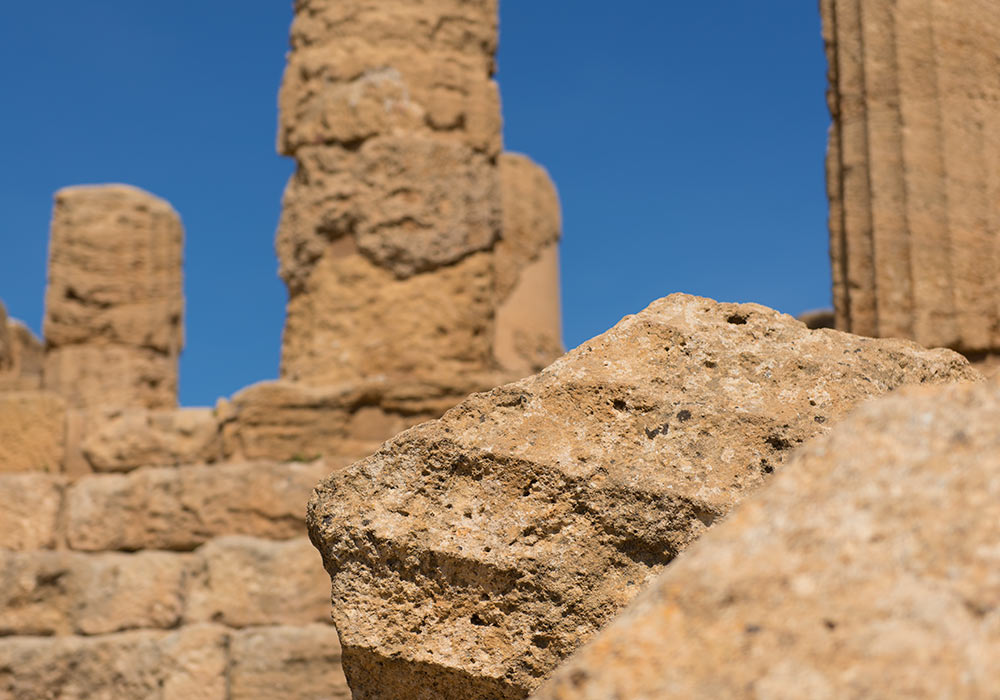
Temple ruins in Agrigento.
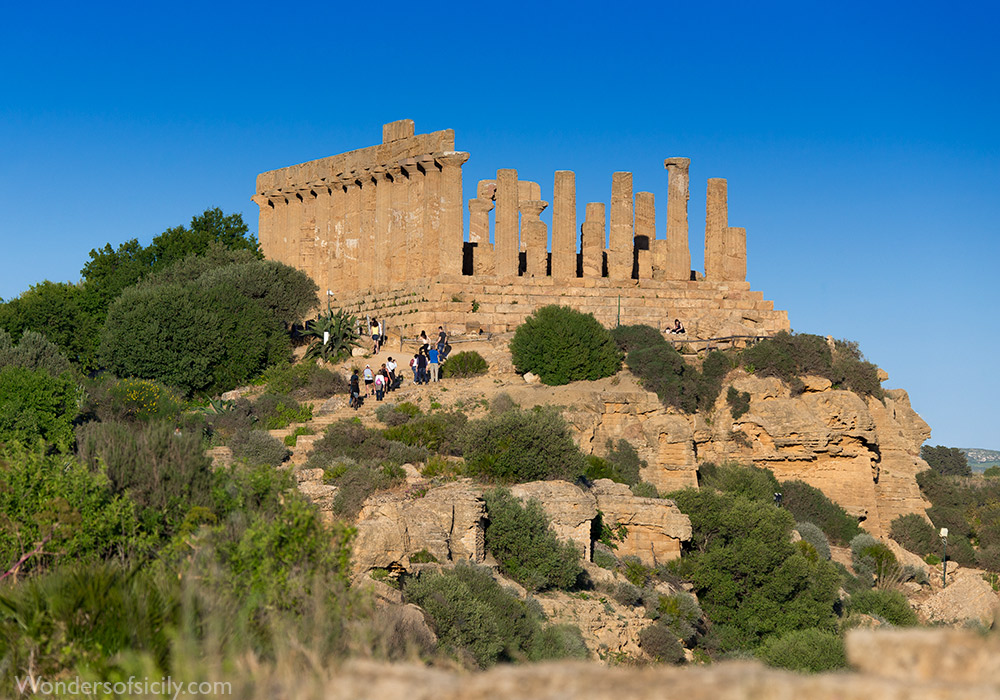
Temple of Hera, Agrigento.
The Defensive Wall around Akragas
In Italian, but you can turn on auto translated subtitles (CC) and choose your language in the Settings (the wheel).
Arcosolium
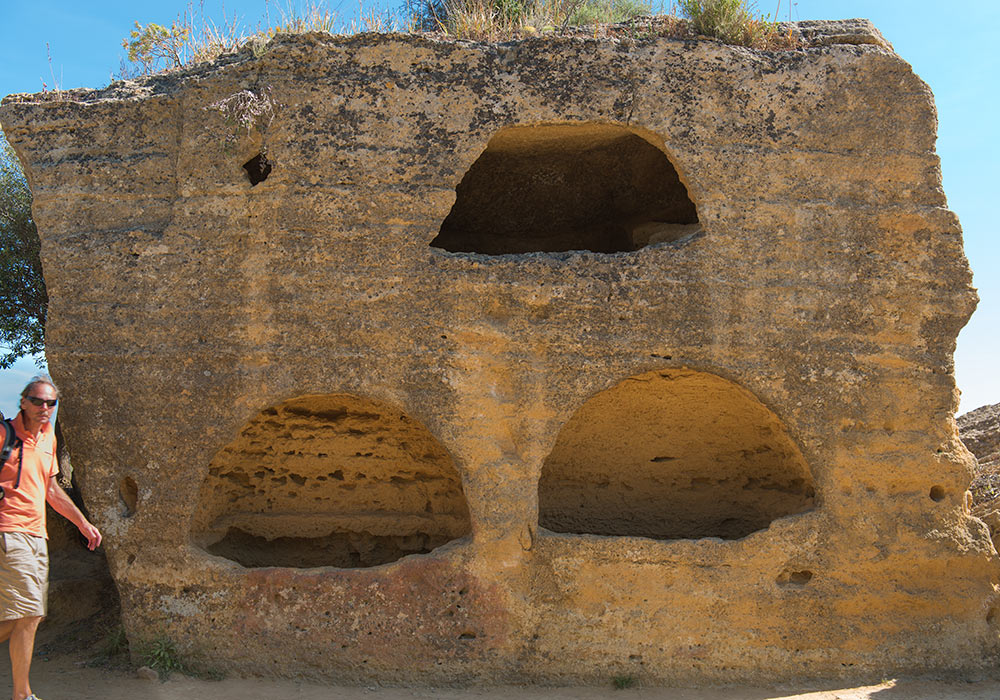
The cliff-line served as a natural defensive wall during the Greek period. The cavities in this "wall" (arcosolia, singular: arcosolium) characterized by an a curved upper surface are tombs made between the 4th and the 7th century AD.
Photo: Per-Erik Skramstad / Wonders of Sicily
An arcosolium is an arched recess used as a place of entombment. The word is from Latin arcus, "arch", and solium, "throne" (literally: "place of state") or post-classical "sarcophagus". Early arcosolia were carved out of the living rock in catacombs. In the very earliest of these, the arched recess was cut to ground level. Then a low wall would be built in the front, leaving a trough (the cubiculum, "chamber") in which to place the body. A flat stone slab would then cover the chamber containing the body, thus sealing it. The stone slab occasionally also served as an altar, especially for Christians. who celebrated Mass on them. In the later arcosolia, the arched recess was carved out to about waist height. Then the masons cut downwards to make the chamber into which the corpse would be placed. In effect, the trough was then a sarcophagus with living rock on five of its six faces. As before, a flat stone slab would then seal the cubiculum. From the 13th century onwards, and continuing into the Renaissance, arcosolia were built above ground, particularly in the walls of churches. In these post-Roman era recesses, which were built of brick and marble, the sarcophagi are usually separate from the arch. Source: Wikipedia
- Death in Sicily
- Arcosolium, Valley of the Temples, Agrigento
- Byzantine tomb-recesses in the wall on Via Pirandello, Taormina
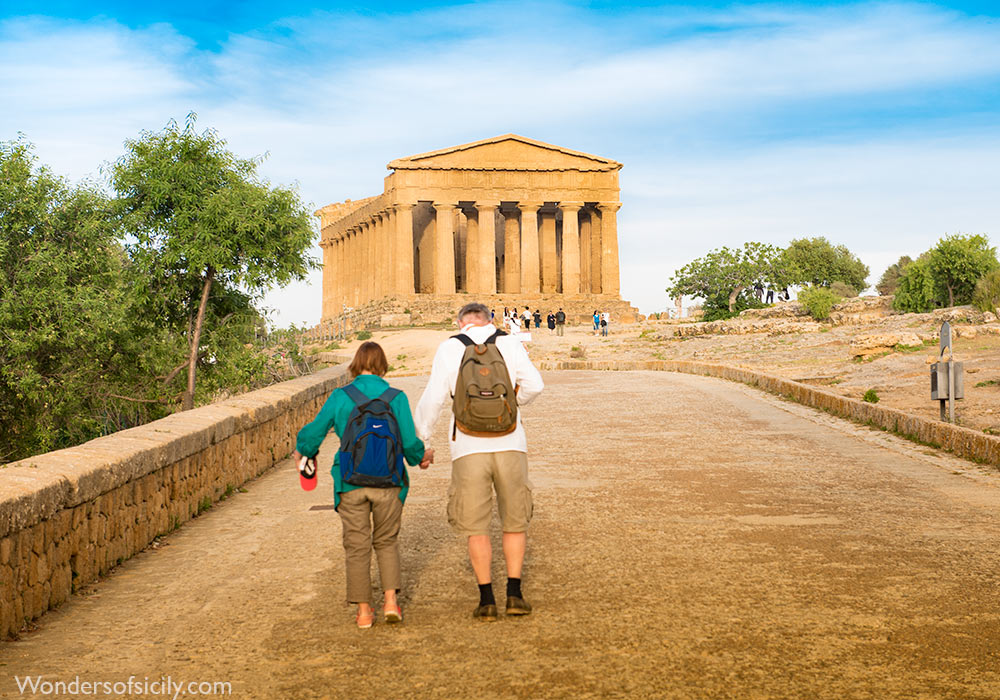
Via Sacra. Temple of Concord.
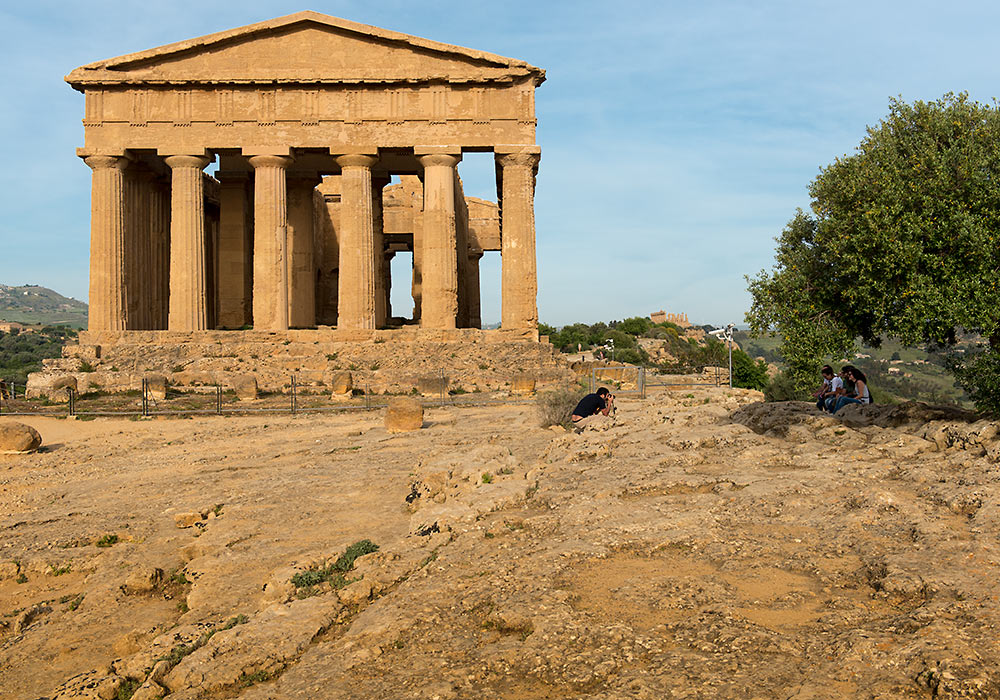
Temple of Concord.
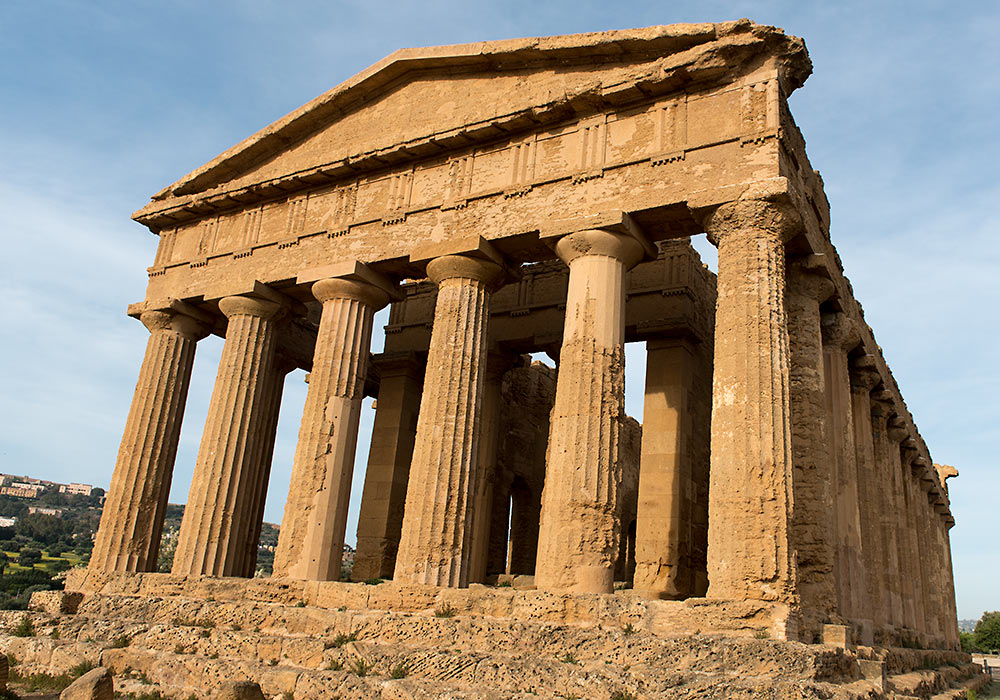
The Temple of Concord is one of the best preserved temples of antiquity, most likely because it served as a church during the Middle Ages.
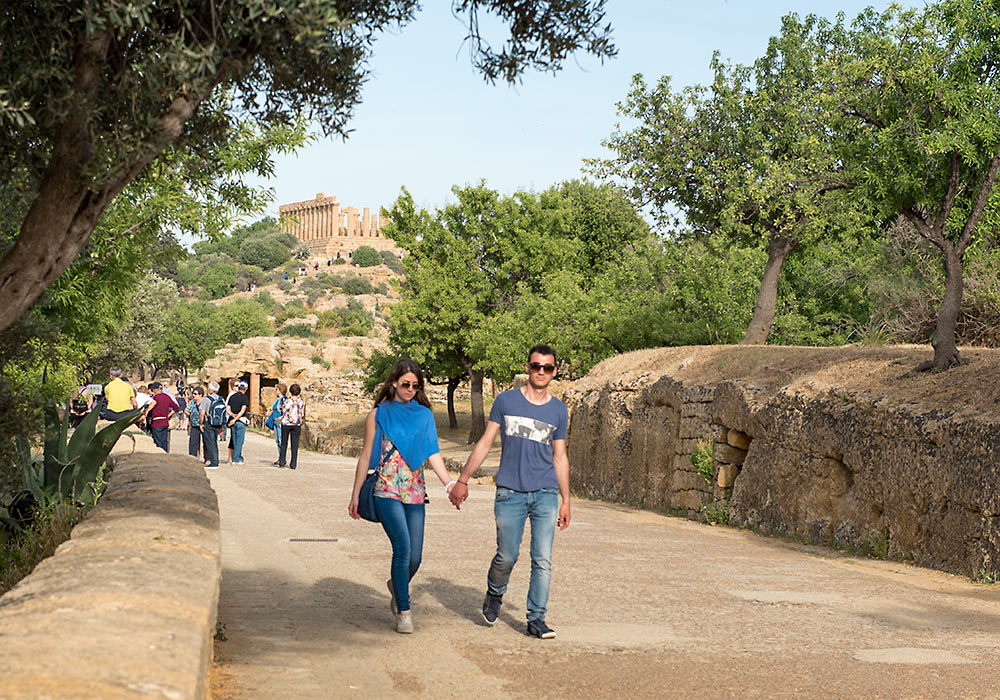
The Valley of Temples in Agrigento is one of the main attractions of Sicily, and a national monument of Italy, included in the UNESCO Heritage Site list in 1997.
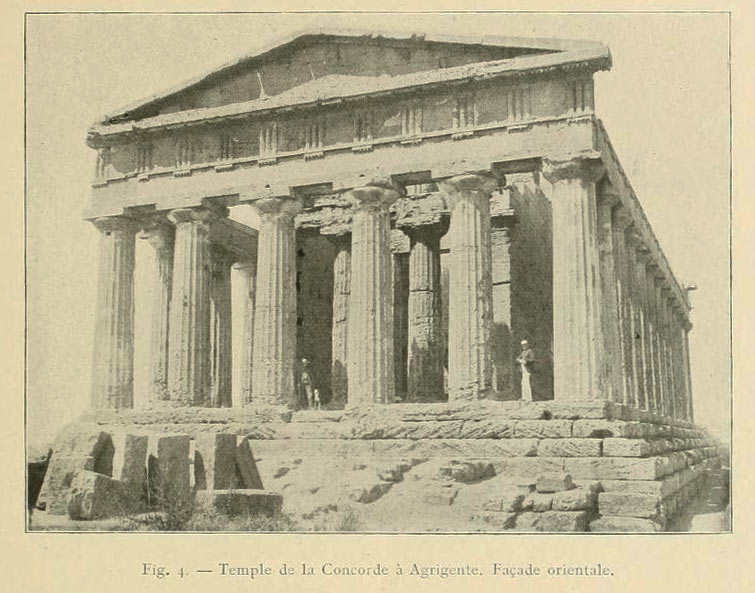
Temple of Concord in the Valley of Temples, Agrigento. Photo must have been taken before 1907.
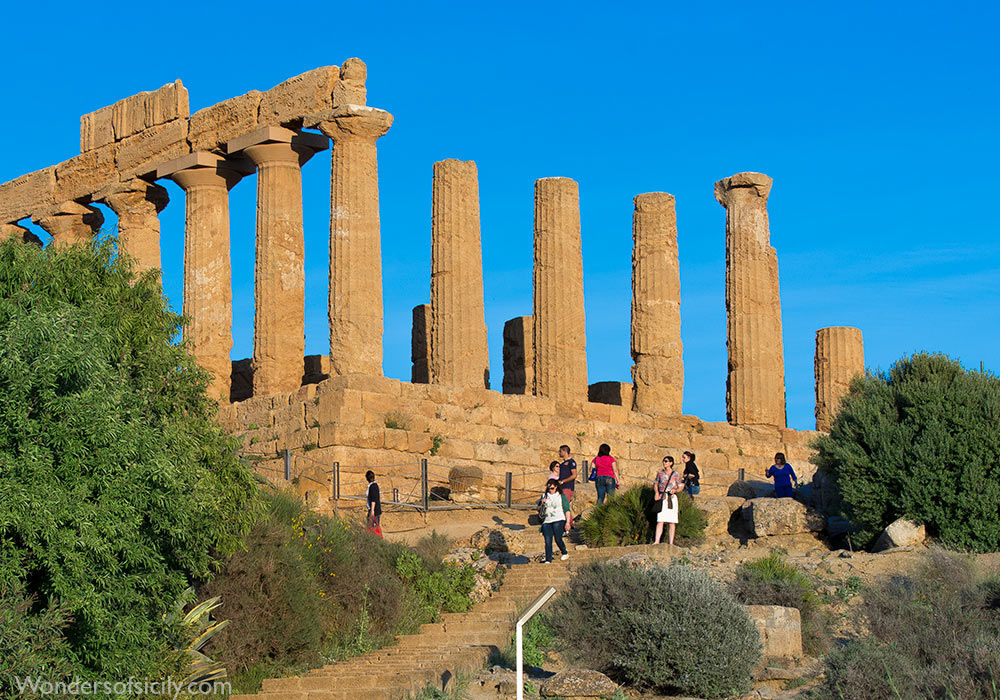
Agrigento - Temple of Hera in the Valley of the Temples.
Agrigento Timeline
- 580 BC: Agrigento is founded as a colony of Gela and came to prominence under the tyrants Phalaris and Theron
- 480 BC: The artificial lake Kolymbetra was dug by Theron's Carthaginian prisoners taken at Himera
- 406 BC: The Carthaginians capture the city after an eight-month siege and burn the city
- 340 BC: Agrigento was rebuilt by Timoleon, who defeated the Carthaginians
- 261 BC: The Romans take the city
- 255 BC: Carthaginians recapture the city
- 218-201 BC Agrigento suffered badly during the Second Punic War when both Rome and Carthage fought to control it.
- 210 BC: The Romans take the city again, this time Agrigentum remained in their possession until the fall of the empire. Agrigentum remained a largely Greek-speaking community for centuries after the Roman conquest.
- After the fall of the Western Roman Empire, the city successively passed into the hands of the Vandalic Kingdom, the Ostrogothic Kingdom of Italy and then the Byzantine Empire. During this period the inhabitants of Agrigentum largely abandoned the lower parts of the city and moved to the former acropolis, at the top of the hill (this was probably related to the destructive coastal raids of the Saracens).
- Late 6th century: The Temple of Concord is converted into a church by the bishop of Agrigento, San Gregorio delle Rape (St Gregory of the Turnips)
- 828 AD: The Arabs take the city and make the trade flourish by cultivating cotton, sugar-cane and mulberries for the silk industry (they even had to make a new harbour, at Porto Empedocles)
- 1087: The Normans take Agrigento after a 116 days siege
- 1867: Luigi Pirandello was born
- 1885: The author Guy de Maupassant travels in Italy, Sicily included. After returning to Paris, Maupassant began publishing his Sicilian travel memoirs in installments in Le Figaro and Gil Blas
- 1927: Mussolini orders that the city should be called Agrigento, not Girgenti
- 1936: Luigi Pirandello dies
Sources: Wikipedia, The Blue Guide Sicily
The Greek Temples in the Valley of Temples
- Temple of Hera (latin: Juno Lacinia)
This temple is erroneously identified as being dedicated to Hera (Juno Lacinia) - Temple of Concord
This is the second-best-preserved of ALL the Greek temples (after the Temple of Hephaistos in Athens). The name Concord occurs in a Latin inscription found here, but the temple has not been attributed to any particular divinity. The excellent state of preservation is explained by the fact that it was converted into a church by the bishop of Agrigento, St Gregory of the Turnips (San Gregorio delle Rape) in the 6th century. - Temple of Herakles (Hercules) - built c. 500 BC.
The Temple of Herakles is probably the oldest temple of Akragas. The attribution of this temple to Herakles is due to a reference in Cicero's Verrine Orations (II.4.43), but it is nevertheless not certain that this is correct. In ancient times it was famed the cult statue. - Temple of Olympean Zeus (Jupiter)
- Temple of Dioscuri (Castor and Pollux)
- Temple of Hephaistos (Vulcan)
- Temple of Asclepios (Aesculapium)
- Temple of Demeter
More of interest in the Valley of Temples
- Archeological Museum
- Kolymbetra
- Rocky Sanctuary of Demetra
- Fortifications
- Agorà and public buildings
- Ekklesiasterion
- Bouleuterion
- Oratory of Phalarys
- Roman Hellenistic quarter
The distance between Agrigento and some other cities in Sicily
Agrigento-Palermo 131 km
Agrigento-Cefalù 134 km
Agrigento-Siracusa 217 km
Agrigento-Noto 242 km
Agrigento-Taormina 219 km
Agrigento-Catania 167 km
Agrigento-Trapani 130 km
Agrigento Festival (1957)
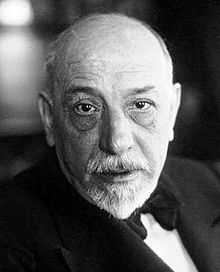
Luigi Pirandello, (1867–1936), Sicily's greatest playwright, novelist, and short-story writer. In 1934 he won the Nobel Prize for Literature. He was born near Agrigento, and was an important innovator in modern drama. The birthplace of Luigi Pirandello is called Chaos, between Agrigento and Porto Empedocles, now a museum. Paolo and Vittorio Taviani's film "Kaos" is based on four of Pirandello's short stories.
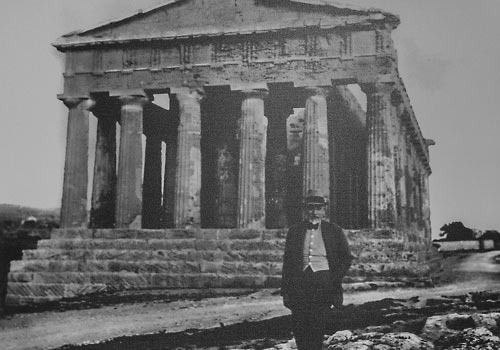
Luigi Pirandello in front of the Concordia Temple (1927).
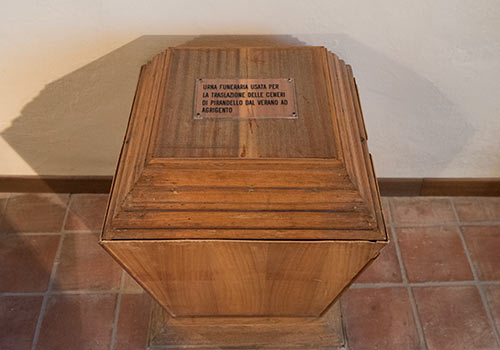
Funerary urn used for transferring Pirandello's ashes from Verano to Agrigento
Photo: Gravgaver.no
Sicilian Sites on UNESCO's World Heritage List
- Agrigento: Archaeological Area of Agrigento (UNESCO)
- Aeolian Islands: Isole Eolie. The group consists of seven islands (Lipari, Vulcano, Salina, Stromboli, Filicudi, Alicudi and Panarea) and five small islets (Basiluzzo, Dattilo, Lisca Nera, Bottaro and Lisca Bianca) in the vicinity of Panarea. (UNESCO)
- Caltagirone (UNESCO)
- Catania (UNESCO)
- Cefalù Cathedral
- Militello Val di Catania (UNESCO)
- Modica (UNESCO)
- Monreale Cathedral
- Mount Etna (UNESCO)
- Noto (UNESCO)
- Palermo: Palazzo dei Normanni (The Norman Palace)
- Palermo: Cappella Palatina (The Palatine Chapel in the Norman Palace)
- Palermo: Church of San Giovanni degli Eremiti
- Palermo: Church of Santa Maria dell'Ammiraglio (also known as the Martorana)
- Palermo: Church of San Cataldo
- Palermo: Cathedral of Palermo
- Palermo: The Zisa Palace (La Zisa)
- Palermo: The Cuba Palace (La Cuba)
- Palazzolo Acreide (UNESCO)
- Ragusa (UNESCO)
- Scicli (UNESCO)
- Syracuse and the Rocky Necropolis of Pantalica (UNESCO)
Sicily: Some geographical names in Italian, Sicilian, English, Latin and Greek
- Agrigento (Sicilian: Girgenti, Ancient Greek: Akragas (Ἀκράγας), Latin: Agrigentum, Arabic: Kirkent or Jirjent)
- Agrigentum, Latin for Agrigento
- Akragas (Ἀκράγας), Ancient Greek for Agrigento
- Àsaru, Sicilian for Assoro
- Assorus, Latin for Assoro
- Assoros, Greek for Assoro
- Baarìa, Sicilian for Bagheria (also the title of a film by Giuseppe Tornatore)
- Balarm, Arabic for Palermo
- Butirah, Arabic for Butera (one of the largest cities in Arab Sicily)
- Càccamu Sicilian for Caccamo
- Castrogiovanni (until 1926 Enna was known as Castrogiovanni)
- Castrugiuvanni, Sicilian for Enna
- Cefalù (Sicilian: Cifalù, Greek: Κεφαλοίδιον, Diod., Strabo, or Κεφαλοιδὶς, Ptol.; Latin: Cephaloedium, or Cephaloedis)
- Cephaloedium or Cephaloedis, Latin for Cefalù
- Cifalù, Sicilian for Cefalù
- Egesta, Greek for Segesta
- Enna (Sicilian: Castrugiuvanni; Greek: Ἔννα; Latin: Henna and less frequently Haenna). Until 1926 the town was known as Castrogiovanni.
- Girgenti, Sicilian for Agrigento
- Henna / Haenna, Latin for Enna
- Hyspicae Fundus, Latin for Ispica
- Ispica (Sicilian: Spaccafurnu, Latin: Hyspicae Fundus)
- Jirjent, Arabic for Agrigento (also: Kirkent)
- Kefaloidion or Kefaloidis (Κεφαλοίδιον / Κεφαλοιδὶς), Greek for Cefalù
- Kentoripa, ancient Greek for Centuripe
- Kirkent, Arabic for Agrigento (also: Jirjent)
- Noto (Sicilian: Notu; Latin: Netum)
- Notu, Sicilian for Noto
- Netum, Latin for Noto
- Palermo (Sicilian: Palermu, Latin: Panormus, from Greek: Πάνορμος, Panormos, Arabic: Balarm, Phoenician: Ziz)
- Palermu, Sicilian for Palermo
- Panormos (Πάνορμος), Greek for Palermo
- Panormus, Latin for Palermo (from Greek: Πάνορμος, Panormos)
- Sarausa, Sicilian for Siracusa
- Selinous, Greek for Selinunte
- Selinus, Latin for Selinunte
- Siggésta, Sicilian for Segesta
- Siracusa (English: Syracuse, Latin: Syracusæ, Ancient Greek: Syrakousai (Συράκουσαι), Medieval Greek: Συρακοῦσαι, Sicilian: Sarausa)
- Spaccafurnu, Sicilian for Ispica
- Syracuse, English for Siracusa
- Syracusæ, Latin for Siracusa
- Syrakousai (Συράκουσαι), Ancient Greek for Siracusa
- Syrakousai (Συρακοῦσαι), Medieval Greek for Siracusa
- Taormina (Sicilian: Taurmina, Greek: Ταυρομένιον Tauromenion, Latin: Tauromenium)
- Taurmina, Sicilian for Taormina
- Tauromenion (Ταυρομένιον), Greek for Taormina
- Tauromenium, Latin for Taormina
- Terranova is the old name for Gela (the fifth largest town in Sicily)
- Ziz, Phoenician for Palermo

